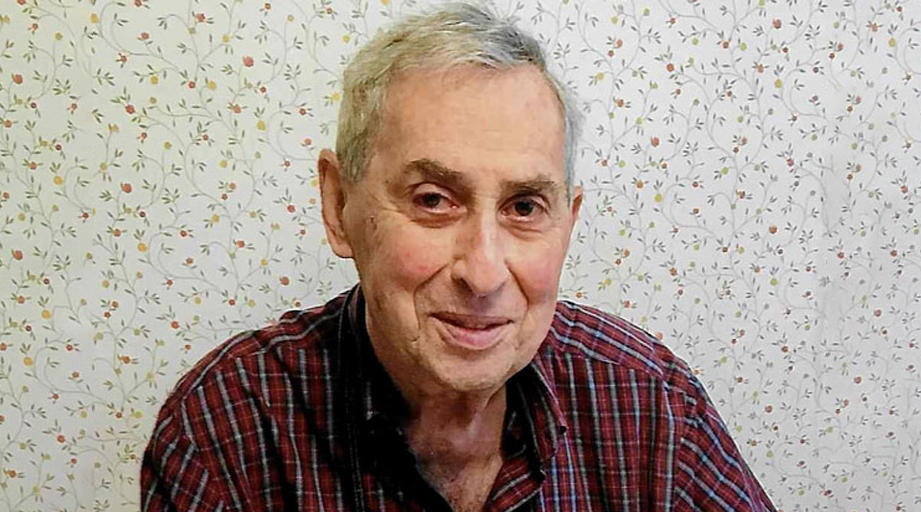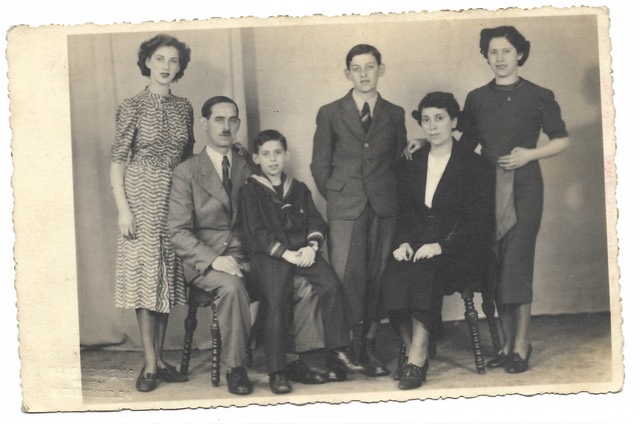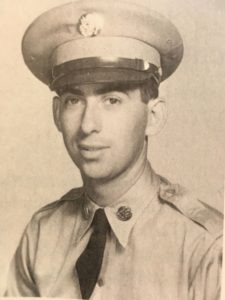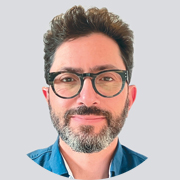

Gustav, Kurt, Fritz, Tini, Edith
PIONEERING PHARMACIST KURT KLEINMANN, R.PH., HAS SEEN the worst and best sides of humanity. In 1938, as Hitler rose to power in Europe, his family was among the millions of others to bear the brunt of a growing tsunami of anti-Semitism.
"I remember as a child in Vienna having a Hitler youth push my head into the snow," recalled Kleinmann, now 91 years of age. The Kleinmann family's situation worsened in 1939 when his father, Gustav, and his older brother, Fritz, were arrested and sent to the Buchenwald concentration camp in Germany and eventually to the Auschwitz concentration camp.
Then in 1942, Kleinmann's mother, Tina, and his sister, Herta, were rounded up and shipped to Minsk. Kleinmann's father and brother survived seven years of forced labor at the concentration camps, but his mother and sister were killed three days after arriving in Minsk.
Fortunately for Kleinmann and his elder sister, their mother had the foresight to send them both off to the United States and England, respectively. This heart-wrenching decision was likely made knowing she may never see her children again.
Arrival in the States
Kleinmann's time in Europe, which is written about in a recent book titled "The Boy Who Followed His Father into Auschwitz," was the dark side of humanity, but when he arrived in the United States at age 11, Kleinmann was shown a level of generosity that he has reciprocated in equal measure, both inside and outside of his profession.
"I was taken in by a wonderful family in New Bedford, Massachusetts, and they really saved my life," Kleinmann said. "Judge Samuel Barnet and his three sisters became like a new father and three new mothers. I always kidded that I had to behave so as not to spoil their reputation."
Kleinmann was given all the opportunities that a child his age could hope for: summer camp and afternoons playing baseball, "which I enjoyed even though I wasn't good enough to make the high school team," he said.
As a high school student, Kleinmann set his sights on a career in aeronautical engineering but soon realized that pursuing this path required an element of tedium that wasn't for him.
"My high school counselor said I needed to take mechanical drawing if I wanted to become an aeronautical engineer. The first nine weeks of the class were very boring and involved perfecting your handwriting, writing the letters of the alphabet over and over and over again in lower case and upper case," Kleinmann recalled.
When he spoke to his counselor about dropping the course, she reiterated that mechanical drawing was a requisite for college studies in aeronautical engineering.
"I looked at her and said, 'ok, so I'll become a pharmacist!' and that's how I ended up with a wonderful career which I've loved ever since," Kleinmann said.
Pharmacy Studies Interrupted by Military Service

uniform
Kleinmann completed his undergraduate pharmacy studies in 1952 at what was then the Rhode Island College of Pharmacy, continuing on to graduate studies at Ohio State University with the intention of getting a job in pharmaceutical manufacturing. However, a year into the program, Kleinmann was drafted into military service and sent to Germany and Austria, where he spent 16 months as a hospital pharmacist.
The experience left him wanting to work in hospitals rather than industrial manufacturing. Kleinmann, who had applied for a residency at the Johns Hopkins Hospital prior to serving in the military, was offered a staff position in the pharmacy department on his return to the United States. He took up the offer and was eventually promoted to serve as the supervisor of their compounding operations. After two years there, Kleinmann decided he needed to get back on track with graduate-level hospital pharmacy studies.
He was accepted to the St. Louis College of Pharmacy's residency program. He completed a placement at the St. Louis VA Medical Center–John Cochran Division, where he got a flavor of the possibilities within hospital pharmacy.
"My preceptor wrote a letter to every hospital in St. Louis saying, 'I have a resident here, and I'd be happy to share him with you for a month, and you can work him as hard as you want, but you have to teach him something,'" Kleinmann recounted.
Big Break
It was at the tail end of his residency that Kleinmann had a career-boosting meeting with Paul Parker, a pioneer in hospital pharmacy who at the time was the executive secretary for ASHP, then known as the American Society of Hospital Pharmacists.
"Paul was asked to man the ASHP booth on his own at a convention for the Catholic Hospital Association, which had their headquarters in St. Louis, and my preceptor knew Paul and sent me to keep him company at the booth," Kleinmann said.
The new graduate left a strong impression on Parker. After the meeting, the elder pharmacist introduced his colleagues at Grant Medical Center in Columbus, Ohio, to Kleinmann because they were searching for a new pharmacy director.
"Paul had received a call from the hospital administrator at Grant that they were seeking a new pharmacy director. He indicated to them, 'I just met a young fellow in St. Louis, and you should give him a call,'" Kleinmann recounted.
Innovator
Kleinmann was hired for the job and went on to develop their pharmacy program. He and was also given the freedom to flex his muscles as an innovator. "In those early days, doctors on the floor wrote medication orders in the patient's chart, and nurses would copy those by hand and send the copies to the pharmacy," Kleinmann explained. "Needless to say, there were numerous transcribing errors and dispensing errors."

table
To improve the safety of the prescribing process, in 1965, Kleinmann developed a standardized approach for physicians to send their original orders directly to the pharmacy. The published protocol touched on everything from the essential components of an order form to considerations around the color of the paper being used.
Marvin Lew, M.S., who worked at Montefiore Medical Center in New York, with Kleinmann during his 30 years as pharmacy director there, said Kleinmann was relentless in his efforts to advance the profession of hospital pharmacy.
"Kurt pushed innovative programs year after year, and when a project was successfully completed, we would all breathe a sigh of relief and say how thankful we were that it was over, only to find out there was an even greater project for the upcoming year," he said.
Recognition
Kleinmann's order entry innovation won him national recognition, and he was invited by ASHP to do a speaking tour across the country. Nearly 30 years later, Kleinmann's ongoing contributions – including early advocacy for pharmacy specialization and greater pharmacist involvement in the continuum of care – were again recognized by ASHP, this time through the prestigious Harvey A.K. Whitney Lecture Award.
"ASHP and I have been very good partners," Kleinmann told ASHP InterSections. "In fact, if you make a list of every committee that ASHP ever had, at one time or another, I chaired it."
Giving Back to the Refugee Community
During his time at Montefiore Medical Center, Kleinmann also had the opportunity to pay forward the generosity he received from Judge Barnet when he arrived in the United States. While working at Montefiore, Kleinmann helped refugees from the former Soviet Union who had been nurses and doctors to re-integrate into the healthcare field in the United States.
"They did not meet the licensure requirements to practice their profession in the States, but I developed a program where they received English lessons at the local college and then completed a 10-week technician training program," said Kleinmann. "I was able to place most, if not all, of these individuals at hospitals in the metropolitan New York area, where they re-entered the health care workforce and gave hospitals and pharmacy directors the chance to augment their pharmacy program."
As Kleinmann's list of deeds shows, despite his direct experience with the sinister side of humanity during his childhood, he has not only transcended the effects of the Holocaust, he has become a beacon of light for those around him.
"I can honestly say that if one were in Kurt's presence and were willing to meet him halfway, he would make them a better individual and person," said Lew, Kleinmann's former colleague. "Indeed, being close to him on a daily basis for many years made me a happier and more positive person."
An ASHP news article provides additional details about Kleinmann's family and their experiences in Nazi Germany.








